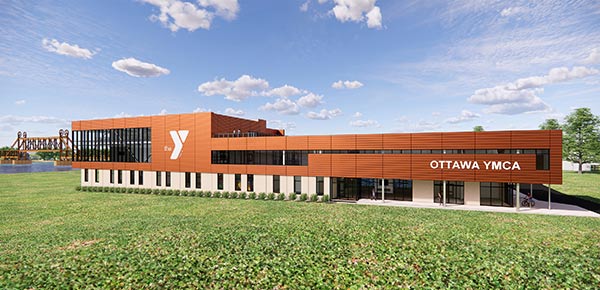
Meticulousness and clarity drive Jay Johnson’s three decades at Legat Architects
On a freezing morning in 2011, coworkers Jay Johnson and Ted Haug studied precast concrete panels at a construction site on College of DuPage’s (COD) Glen Ellyn, Illinois campus. The project was the college’s new Campus Maintenance Center, and Johnson wanted to see how the minor color variations would look in the sun.
That project, finished in June 2012, went on to receive a Best Project award from the Precast/Prestressed Concrete Institute.
“That could very easily have been a mundane building,” said Haug, “but as with every project he does, Jay wanted to do something special. He’s a true perfectionist, always pushing to get to the next highest level.”
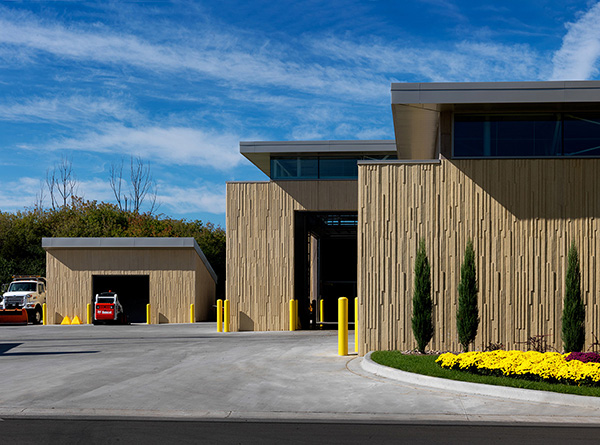
Haug is not alone in his assessment of Johnson. Coworkers, clients, and industry partners consistently praise two things about him: his attention to detail and his ability to clarify complex concepts.
March 17, 2023 marks 30 years of Johnson drawing from these values to hone his projects and to equip many novice architects with a strong technical foundation to advance their careers.
Coworker Bryan Archibald spent a good part of his early career working under Johnson’s wing. “Jay is fully invested and willing to do whatever it takes to make the project a success for the client and Legat,” said Archibald. “He makes sure that everyone on the team — designers, building owners, consultants — is on the same page, and he goes above and beyond in everything from the large-scale conceptual design down to the fine details.”
These strengths have propelled Johnson’s work from his first Legat project (a school window replacement) three decades ago to his most recent undertakings such as Illinois Tollway’s new state police facility and Ottawa YMCA’s brand-new facility now under construction.
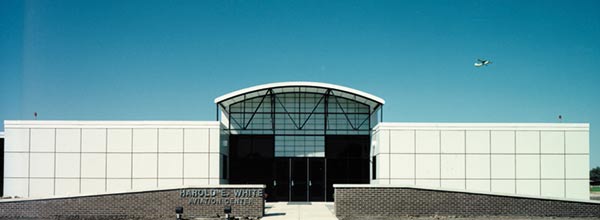
Mural to Major Buildings: The Legat Journey
In the late 1970s and early ’80s, a large mural enlivened a corridor at Highland Elementary School in Downers Grove, Illinois. It depicted a natural scene with trees, a deer, an owl, and other animals. Its creator was an 11-year-old Jay Johnson, whose creativity and appreciation for details had already begun to sprout.
High marks in math, science, and art steered him toward introductory architecture courses at Downers Grove North, and as a sophomore, he started working for a residential firm. At 15 years old, Johnson was drawing and designing high-end residential projects. No computers in those days — everything was pencil on vellum. He continued moonlighting for that firm for the remainder of high school and through most of his undergraduate years.

After graduating from the University of Illinois Urbana-Champaign with master’s degrees in architecture and civil engineering (with an emphasis on construction management), Johnson joined Matocha Associates, a firm in Clarendon Hills, Illinois. There he focused mostly on healthcare and retail projects. Two years after Johnson started at Matocha, the firm had a downturn that put him on the hunt for a new job.
Johnson reached out to U of I classmate Scot Parker, who worked at Legat Architects (and who also recently celebrated his 30th anniversary at the firm). There was an opening at Legat’s new Oak Brook studio, which opened three months prior. On March 17, 1993, Johnson joined seven others at that studio, where he jumped into a junior high school window replacement project. Before long, Johnson was heavily involved in large projects for clients such as Prairie State College and Lewis University.
In the early days, Johnson and his colleagues often had to contend with large, complex files and slow computers. They would put a command into one computer to start a 20-minute regeneration process, then move to three or four other computers and repeat the process. To meet one deadline, they slept under their desks and used 36-inch by 48-inch sheets like blankets.
During his 30 years at Legat, Johnson has held many roles including AutoCAD champion, project manager, projects director, and studio director. Today, he serves as a principal and a co-director of the firm’s community segment. His Legat portfolio includes hundreds of projects ranging from rehabilitation centers and municipal facilities to schools and recreational centers. And the computers are much faster!

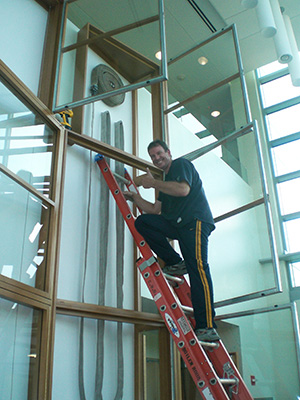
Bringing Clarity to the Particulars
During one weekend when construction of College of DuPage’s Homeland Security Education Center was wrapping up, Jay Johnson and his coworkers installed axes, fumigation suits, and other memorabilia in corridor display cases.
Johnson, the architectural project manager of the new facility, had received a list of what the college wanted to display.
“Jay wanted everything to be flawless,” said Archibald, who was also there. “So he took it upon himself to help curate and install the displays.”
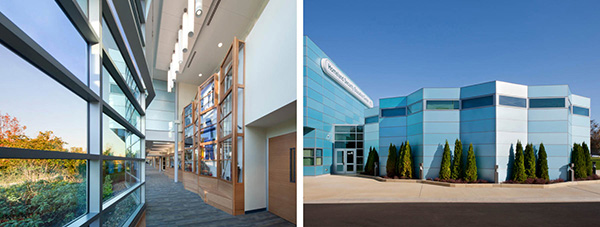
Johnson gave that same attention to every aspect of the project, from the study nooks within the undulating corridors to the specific shades of blue and green on the metal panels ornamenting the exterior walls.
The multiple award-winning project, one of the first and largest community college immersive public safety training centers in the nation, set a bar for first responder training and led to another facility that Johnson led: the COD Homeland Security Training Center, featuring one of the largest indoor shooting ranges without interior columns in the Midwest. These projects also paved the way for Cuyahoga Community College’s Simulated Scenario Village, for which Johnson served as a public safety consultant.

Johnson also took over project management duties in the middle of the design for the FMC Natatorium. Johnson’s thoroughness proved critical for what became one of the largest indoor swimming competition venues in Illinois. The facility’s unique horseshoe setup seats up to 1,200 spectators — more than any other indoor pool in the state — and former Olympic swimmer David Sims called the facility “the fastest and most beautiful aquatic center in Illinois.”
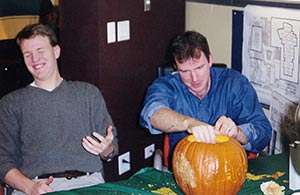
Johnson’s focus on details not only brought about the success of these groundbreaking projects (and many others) but also endowed a new generation of architects with the skills they needed to advance.
Jeff Sandberg, now Legat’s chief operating officer and director of its Quad Cities studio, worked closely with Johnson in Oak Brook. “Jay taught me the vast majority of what I learned technically,” he said, “and that early guidance was foundational for my career.”
Just as important as details to Johnson is the need to communicate them clearly to project teams, clients, and contractors. One of his current projects is a new YMCA in Ottawa, Illinois. The 69,000-square-foot facility now under construction will serve as a fitness destination for community members, a home for several high school swim teams, and a meeting place for community organizations.
“When Y CEOs undertake major construction projects like a new Y, many people do not realize we are not contractors, architects, or construction managers,” said Joe Capece, executive director of the Ottawa YMCA. “Jay goes out of his way to explain things to me in language that I can understand.”

Getting into the Field
Ever since he walked construction sites as a high school student working for a residential firm, Johnson has valued how designs play out in the field. This appreciation led him to pursue a specialization in construction management at the University of Illinois.
One of his first Legat projects was construction observation for Lewis University’s Harold E. White Aviation Center, featuring an observatory that overlooks a runway. Since then, he has overseen the building of many of the firm’s projects.
Firm in his conviction that “one day in the field observing a building going up is worth a month in the office,” Johnson encourages emerging professionals to spend time on site. He said it allows them to see how what they draw gets built, understand potential drawbacks, and even get a better appreciation of the challenges builders face.
“When we draw,” said Johnson, “we’re usually thinking about our building on a sunny day, but that contractor could be working in snow or moving around in six inches of mud.”
Johnson’s respect for builders goes both ways. “Jay is by far the best architect I have worked with in my career,” said Isaac Kim, senior project manager with Pointcore Construction. “He sincerely cares for the project and the client’s needs as well as being a great team player with his practical approaches.”

Down the Corridors and Into the Weeds
The phrase “getting into the weeds” often has a negative connotation. When it comes to architecture, however, some people need to get into the weeds — otherwise, there could be major repercussions.
One such person is Jay Johnson. For more than 30 years, his painstaking approach to design and architecture has led to delighted building owners and occupants. The evidence exists in the many buildings scattered throughout the Chicago region and beyond.
More than 40 years ago, the hundreds of students who enjoyed a young Jay Johnson’s elementary school corridor mural had no idea how prophetic it was — today, thousands of people experience Johnson’s work every day. That includes classrooms, gyms, offices, maintenance bays, kitchens, labs, libraries, fitness centers, pools, rehab spaces, and of course, corridors.
Contact us or comment below to share your experiences with Jay Johnson.
